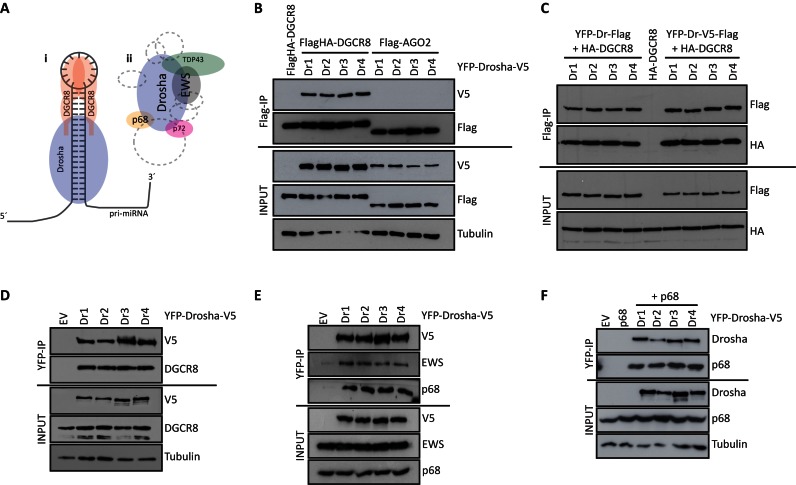Figure 2.
All Drosha splice variants form the microprocessor complex with DGCR8 and bind additional interaction partners. (A) Schematic representations of the microprocessor complex (i) and an additional Drosha-containing complex (ii). A selection of interacting partners is represented. Additional proteins are indicated with dashed lines. (B) Immunoprecipitation of Flag-tagged DGCR8 pulled down its interaction partner V5-tagged Drosha. (C) Immunoprecipitation of Flag-tagged Drosha pulled down its HA-tagged microprocessor co-factor DGCR8. (D) Immunoprecipitation of YFP-tagged Drosha pulled down endogenous DGCR8, (E) endogenous EWS and p68 and (F) exogenous p68. All co-immunoprecipitation experiments were performed from cell lysates of HEK293 cells transiently transfected in at least two biological replicates with the respective Drosha splice variant (YFP-Drosha-V5) construct as well as Flag/HA-DGCR8 or Flag-AGO2 (B), HA-DGCR8 (C) or p68 (F), respectively.

